Disclosure: Meeple Mountain received a free copy of this product in exchange for an honest, unbiased review. This review is not intended to be an endorsement.
If Ctrl doesn’t win the prize for strangest game of the year, it’s certainly gotta be in the running. An area control game in 3 dimensions that plays in 20 minutes, featuring pastel colored player pieces, and looks like the love child of Kingdom Builder, Q-Bert and a Lego set?
This I gotta see.

“Now I’m in Ctrl”
In Ctrl you’re attempting to take control of a 3-dimensional “battle ground”, a black cube covered in square holes. You do this by placing 3 of your colored pieces each turn; doing your best to cover as much of the surface area as possible, while trying to prevent your opponents from covering or blocking your pieces.
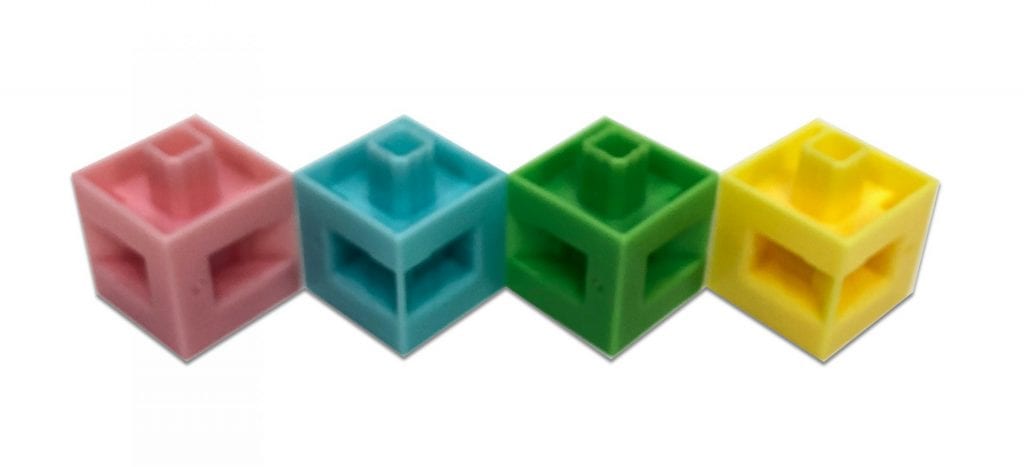
To understand how to begin, it’s probably best to start at the end.
You’ll win the game by having the most points, which you’ll earn from having the most exposed pieces on the surface of the cube. To determine exposure, you’ll be rotating the cube and looking at it from all 4 sides and the top. You and your opponents will count up the visible cubes of your colors, ignoring cubes blocked by any of your opponents’ flags (more on that later). Whichever player has the most points wins the game. Got it?
Now back to me.
“I’m in Ctrl, Never Gonna Stop”
Now that you have a better idea of what you’re doing, let’s take a look at the placement rules. Before the game starts, each player will put one of their cubes at the bottom of one side of the cube.
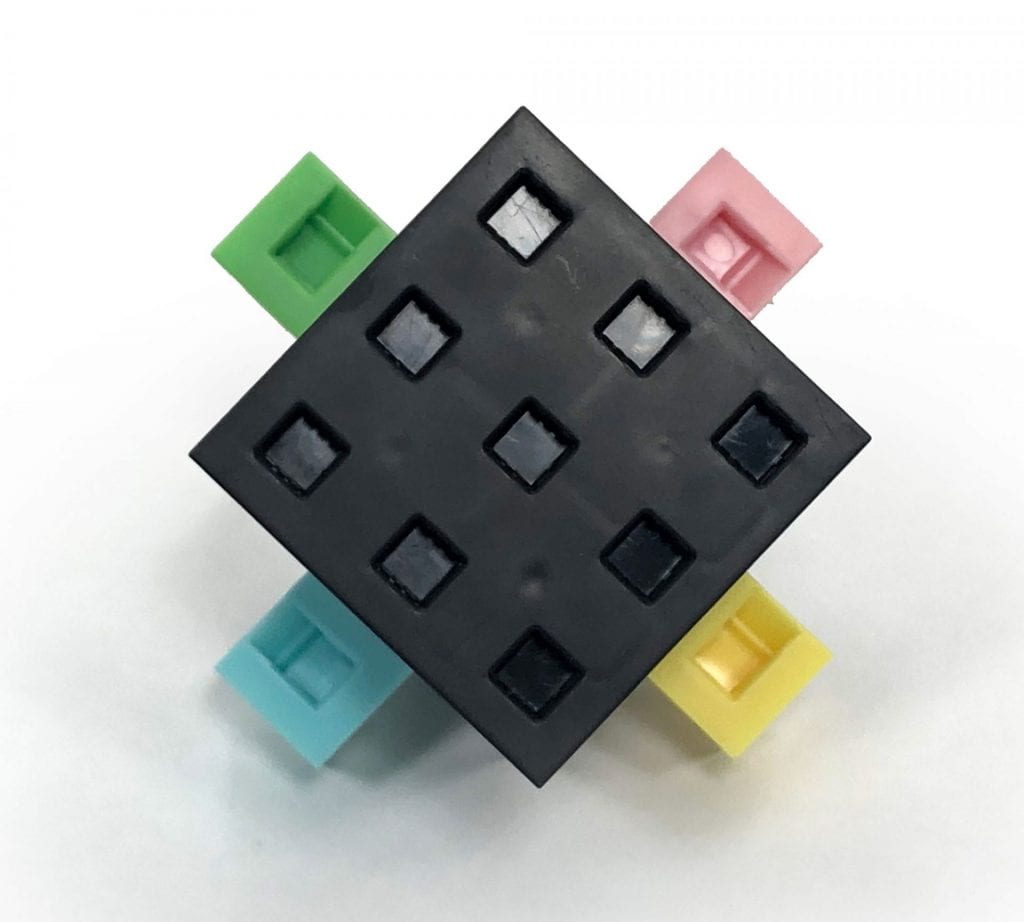
On each turn after that, you’ll place 3 of your pieces in a straight line from one of your existing pieces – and since you only have 21 pieces left, you’ll only have 7 turns in which to build your empire.
Ctrl Block Placement Rules
The placement rules are simple: from an existing block of your color, place 3 cubes in a straight line, then plant your flag pole into any block that belongs to you.
Like most games with simple rules, there’s some nuance.
- Your path must travel along the surface of the cube.
- When you reach the edge of the battle ground your next cube must wrap around the edge.
- If you run into another cube, your next placement must be vertical, following the wall upwards. If you still have cubes, your next cube must wrap around the top of the wall.
- If you ever take a path that would cause one of your cubes to go past the bottom of the cube or a flag pole, you must pick a different path.
The Ctrl rulebook does such a great job of illustrating examples for the block placement that we’re going to use them here.
So What About This Flag?
I’ve mentioned the flag a few times throughout the review, but in a nutshell it’s a blocking mechanism that you have against your opponents. If you see green making a move into your territory, plant your flag strategically and prevent them from spreading out. In addition the flag obscures blocks at the end of the game, preventing a player from scoring any blocks “hidden” by the flag.
Ctrl – #Winning
After all of the cubes have been placed, you and your opponents will tally up the points from each face of the cube, and the winner is the person with the most points. Any cube which is completely hidden by another cube is not counted, nor are cubes hidden behind/beneath a flag. Make sure all players have access to the counting area, and demand a recount if Georgia’s yellow’s point totals are suspicious.
Ctrl for Two Players
You might be wondering, “How does an area control game play with only 2 players”? (Or maybe you’re not; no judgement). Ctrl has a special mechanism for two player games. Each player will play two colors, but only score one of them. At the beginning of a 2 player game each player receives cards with their selected colors. They pick one, placing it face down on the table, then return the other card to the box. The rest of the game is played as normal. At the end of the game each player reveals their chosen color and then the winner is determined.
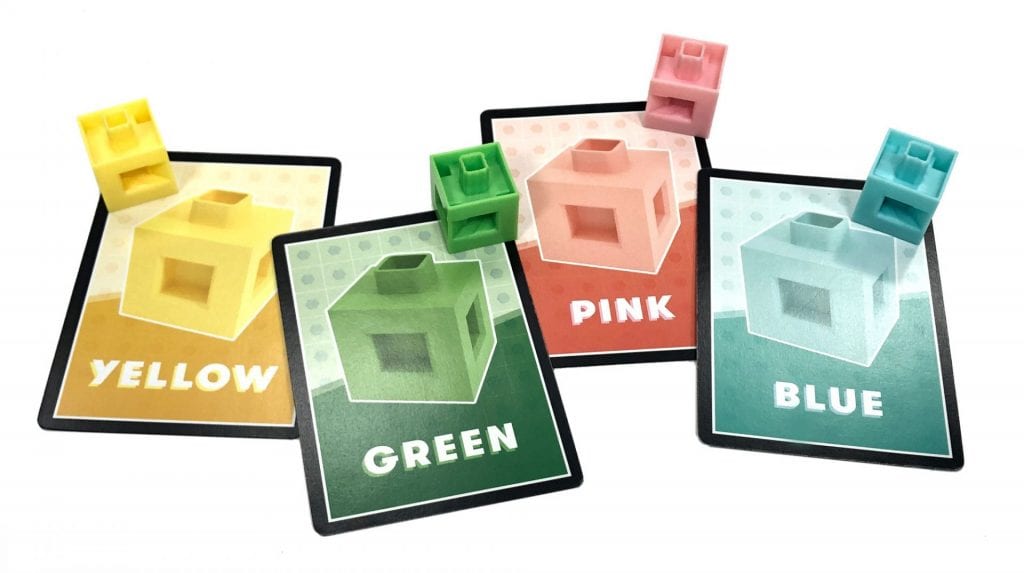
“I Wanna Be the One in Ctrl”
I’ll admit it: when I first saw Ctrl I thought it looked like a gimmick. However Ctrl is anything but. It’s a stylish, simple, thinky, and fun game that has a lot to offer for both casual and serious players.
Ctrl is Stylish
It’s not too often that you get to play a game with a pastel color palette. Reiner Knizia’s original Through the Desert comes to mind, with its softly colored camels. Ctrl’s pieces have a similar color scheme with pink, blue, yellow, and green. The blocks are smooth and light, and you’ll almost certainly be fiddling with them throughout the entire game. Plus the graphic design is stellar: modern and sophisticated, with a glossy rulebook that has plenty of whitespace, large easy to read text, and lots of examples of block placement and scoring.

Ctrl is Simple
You can teach someone how to play Ctrl in minutes. The rules are simple and easily understood: you can show them on the battle ground in seconds. I mentioned earlier that Ctrl felt a little like Kingdom Builder and that’s true…but it’s even easier to learn. Place 3 blocks in a straight line, starting from any of your blocks, and that’s it. Make sure you follow the surface of the cube and you’re golden. Thinking in 3 dimensions is harder, but not by much.
Ctrl is Thinky
If you’ve ever played 3d tic tac toe, Ctrl is a bit like that, in that you’ve always gotta be on the lookout for an attack vector. The rules encourage you to freely rotate the block during your turn to make sure you’re not missing a placement opportunity. Remember that Ctrl is, at least in part, a zero sum game: covering up your opponent’s block with one of your own results in them losing a point and you gaining one. So you’re constantly on the lookout for ways to earn points for yourself while also denying points to the other players.
The flag mechanism is brilliant. Clever placement can prevent one or more of your opponents from placing blocks in their preferred location, and can also prevent the scoring of several points at the end of the game by placing it across blocks owned by your opponent.
Ctrl is Fun
Because the game plays so quickly (20 minutes or less) you can focus on enjoying yourself. Even if you lose, it’s easy to reset and play again. In a recent game with my 14yo daughter and 12yo son we all took turns trash-talking, making little fun jabs at how we were each winning and they couldn’t stop us. In a proud parent moment, my daughter absolutely destroyed my son and me. She had 56 points, my son had 34 points, and I had a measly 26 points.
Ctrl is Can Be Frustrating
While Ctrl is a really fun game, it does have a flaw that can sometimes be quite frustrating. Each block has 5 sides with recesses and 1 side with the nub that you push into either the battle ground or another block. 80% of the time it goes in and stays in. However the other 20% of the time you’ll wind up holding on to the surrounding block as your place yours, trying to make sure that you don’t knock them off. This is especially problematic near the end game where it’s possible you’re working with 2, 3, or even 4 layers of blocks. It’s not hard to manage, but it is an annoyance, and something that came up in every one of our plays. If Ctrl gets a reprint I’d love to see Pandasaurus go with a slightly stiffer plastic to help do away with this issue.
It also would have been nice if Pandasaurus included a resealable bag to hold the blocks and flags. My copy only came with a sealed plastic bag that I had to tear open. For the time being the pieces are now just dumped into the box. That’s not my favorite thing in the world, but it’s not bad.
“Ctrl, to Get What I Want”
One of my most prized traits in a game is cleverness, when a game does something neat. Ctrl has that, and more. It’s a fun time, a clever abstract strategy game, and certainly something you should consider for your table.


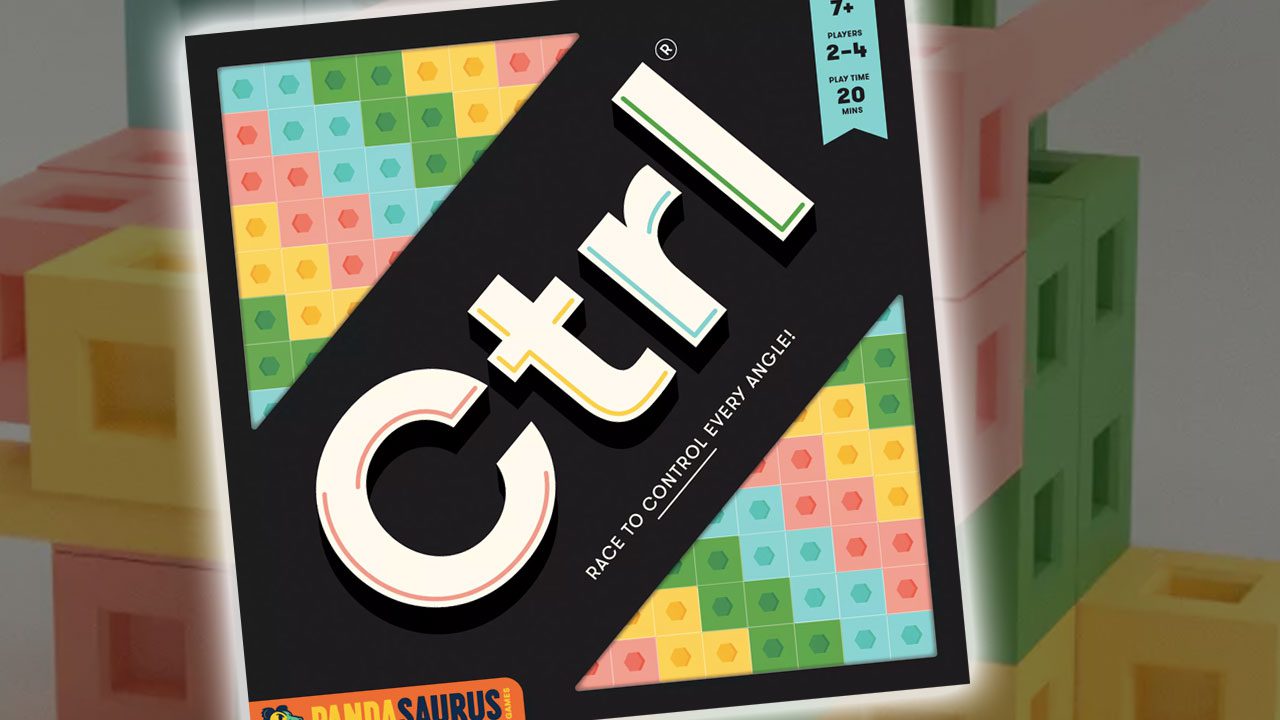


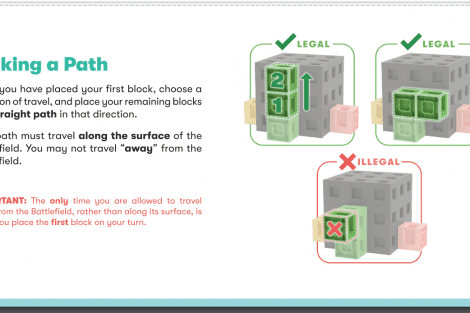
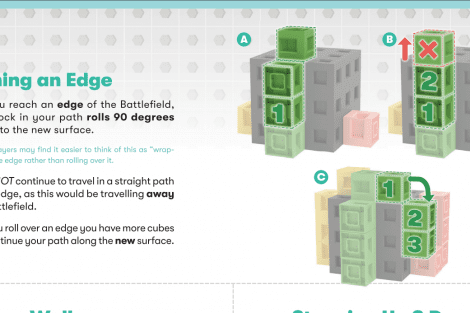
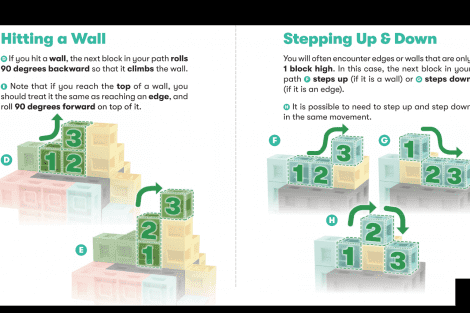
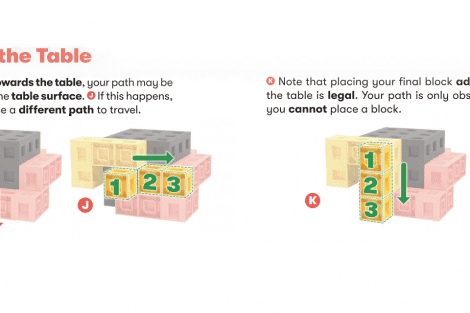



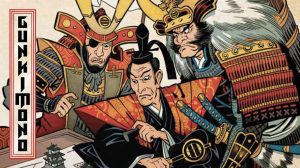





No mention of the poor quality of the components? You’re doing your readers a disservice. Check the BGG comments to see so many complaining of poor fit, pieces falling out, etc.
Howdy Sam, thanks for the comment. Perhaps you missed the section titled “Ctrl -is- Can Be Frustrating” where I talked about the component fit? I’m less concerned about the quality itself, but the fit is certainly something to be concerned with. It’s something I’ve encountered in every game of Ctrl.
I have read this review three times, and I think I get it. I also think I would love it. That said, the only people I know who would play this with me are 1,500 miles away. 🙁